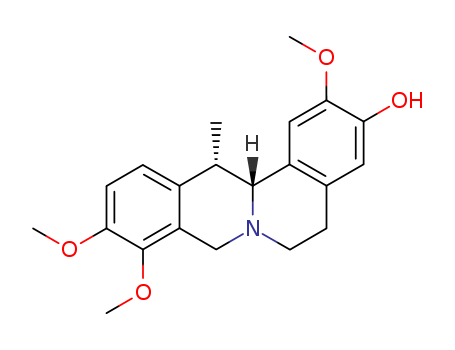- Chemical Name:Corybulbine
- CAS No.:518-77-4
- Molecular Formula:C21H25NO4
- Molecular Weight:355.434
- Hs Code.:
- UNII:7P0E484I6E
- Nikkaji Number:J34.126F
- Mol file:518-77-4.mol
Synonyms:Corybulbine;Corybulbin;518-77-4;UNII-7P0E484I6E;7P0E484I6E;13abeta-Berbin-3-ol, 2,9,10-trimethoxy-13alpha-methyl-;(+)-Corybulbine;D-CORYBULBINE;CORYDALIS-G;CORYBULBINE [MI];CORYBULBINE, (+)-;AKOS000278004;Q27268659;3-HYDROXY-13.ALPHA.-METHYL-2,9,10-TRIMETHOXY-13A.BETA.-BERBINE;(13S,13aR)-2,9,10-trimethoxy-13-methyl-6,8,13,13a-tetrahydro-5H-isoquinolino[2,1-b]isoquinolin-3-ol;6H-DIBENZO(A,G)QUINOLIZIN-3-OL, 5,8,13,13A-TETRAHYDRO-2,9,10-TRIMETHOXY-13-METHYL-, (13S,13AR)-




